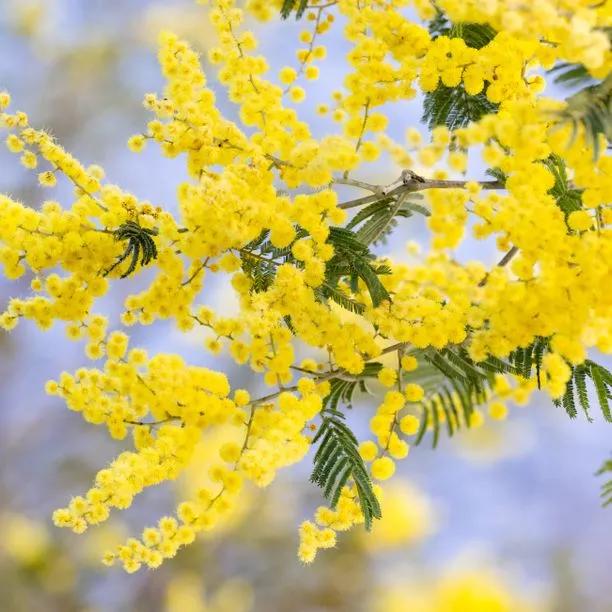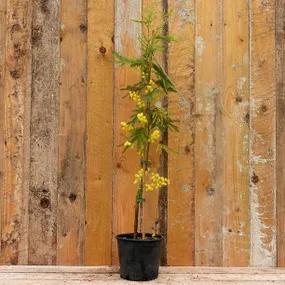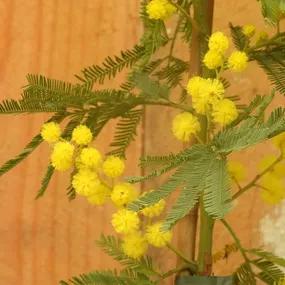Mimosa, Silver/Blue Wattle Plants
The details
Acacia dealbata
- Evergreen
- Fragrant yellow flowers late Jan-early March
- RHS Hardiness H3: Half hardy
- For acid-neutral soil only
- Informal screening shrub
- Max. Height: 10m
- RHS Award of Garden Merit
- Pot Grown Delivery Only: Year Round
Recommended extras
Description
Acacia dealbata: Mimosa Tree, Silver/Blue Wattle Bush
Famous for its brief, bright yellow burst of fragrant pom-pom shaped flowers at the tail end of winter, Mimosa tends to grow as a large shrub rather than a tree. It looks best when only lightly pruned and is a useful informal screening plant, with lovely feather-like evergreen leaves. Acacia dealbata is known as the florists' mimosa, providing them with an armful of sunshine in winter; it is also a wonderful source of winter fodder for bees.
Browse all of our ornamental shrubs.
Delivery Season: Pot-grown delivery only: year round
Features:
- Evergreen
- Fragrant yellow flowers late Jan-early March
- RHS Hardiness H3: Half hardy
- For neutral-acid soil only
- Informal screening shrub
- Max. Height: 10m
- RHS Award of Garden Merit
Growing Mimosa Trees
Easy to grow, thrives on neutral to mildly acidic, well-drained soil only. Grow in full sun, with shelter from winds. As a colonial introduction from South East Australia and Tasmania, bear those sunny climes in mind when planting.
RHS Hardiness rating H3, which is down to about -5C. Although it is only recommended for warm, frost-free areas in the south of England, in practice, Mimosa is hardy enough to grow in a sheltered urban microclimate in most parts of the UK, and is happy in milder coastal areas. To make sure there are no setbacks, small plants can be protected with fleece to keep frost and snow off them; adult trees won't need this extra protection. In colder areas, grow in pots and move under cover when frosts threaten.
When it is young, deadhead the flowers. When mature, trim the bush lightly after flowering to sweep off their remains: a pole-mounted hedge trimmer is convenient for large specimens. Do not prune it except to remove the usual DDD: dead, damaged, or diseased wood.
In Your Garden Design
Use it to give a full display on its own, or offset its bright springtime colour with an evergreen hedge. Interspersed with other shrubs and trees, it can make a fabulous display alongside a pathway, where you can enjoy its powerful fragrance. To match the leaves pair with Eucalyptus gunii or for a matching flower display try Cytisus scoparius.
Did You Know?
Brought back to the UK from Australia by Captain Cook in the late 18th century, wealthy expats then planted it in their gardens on the French Riviera, where it has become very much a symbol of the winter sunshine they were seeking. An annual festival in mimosa's honour has been held there in February since 1931 to mark the beginning of spring.
The sweet flowers are edible and can be used in fritters. The gum that can be tapped from mature plants is also edible, but not considered particularly palatable. A legume, acacia helps to fix nitrogen in the soil and is widely grown in hot countries to prevent soil erosion and boost fertility for other trees in the future.
Rich in pollen, the flowers can be used to create a yellow dye.




